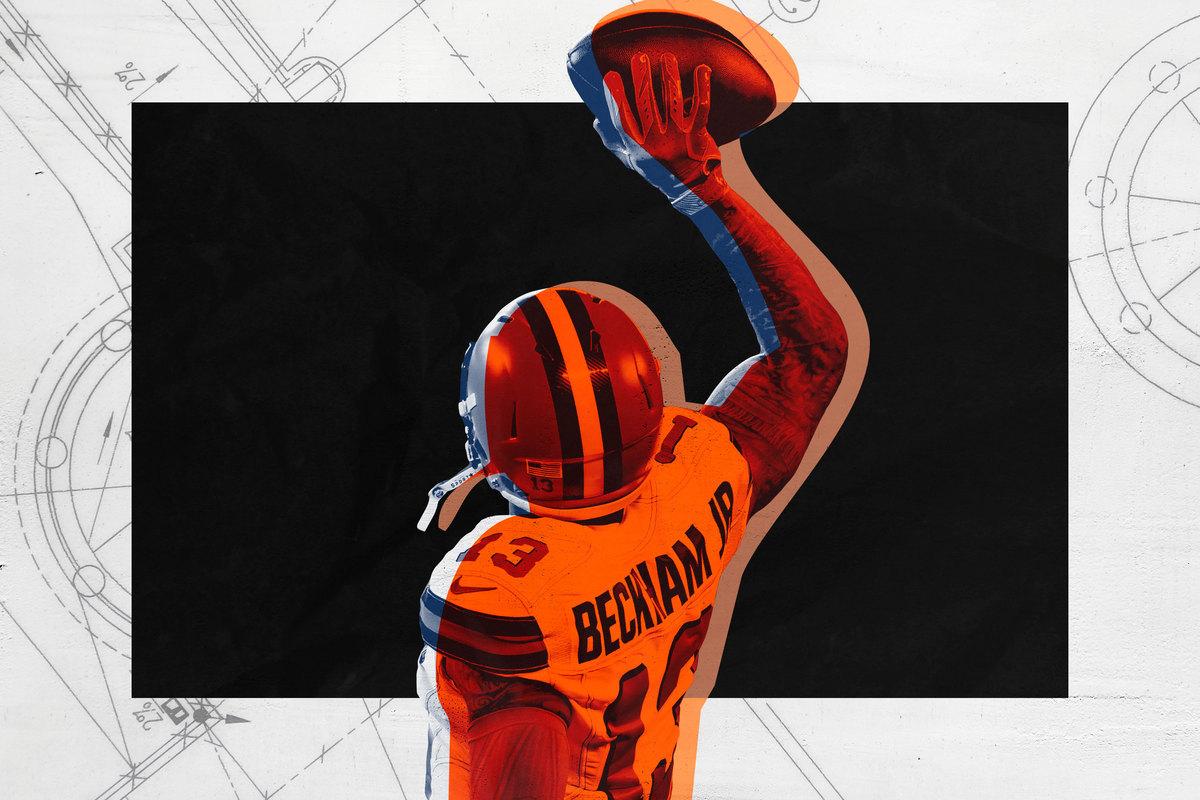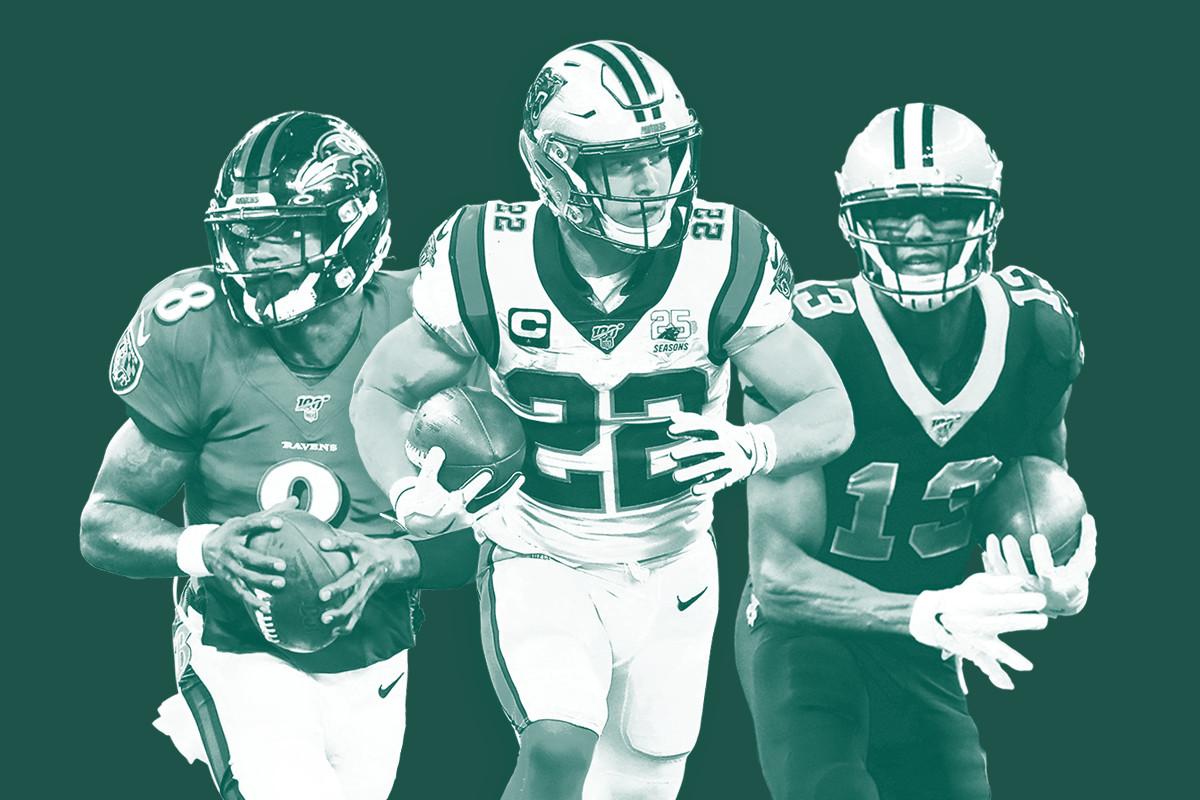
Remember when we all thought the Browns were the NFL’s next dominant team? Or that Carson Wentz was a no-brainer future MVP? Or that Sean McVay was the league’s next great mastermind? Some of the NFL’s teams, players, and coaches who were in the spotlight the past few seasons enter 2020 with tempered expectations—but that doesn’t mean we should count them out. Welcome to The Ringer’s Post-Hype Week, when we revisit some of the league’s biggest story lines from seasons past that aren’t getting as much love ahead of this campaign.
The hardest thing Bill Parcells ever did, he once wrote in the Harvard Business Review, is turn a bad team into a good one. He’d done it three times by 2000, when he outlined how to do it in HBR’s pages, and would do it two more times in the ensuing decade. “When you’ve done a lot of losing, it gets hard to imagine yourself winning,” he said.
Improvement in the NFL is a bit of a paradox in this way: Anyone who has ever taken a team from bad to good, or good to great, describes the process as grueling and, like Parcells, says nothing is harder. Yet it happens so often every year that it can appear easy. The truth is somewhere in the middle: Going from seven wins to 10 is not as difficult as building a particle accelerator but it takes a lot—everything from roster talent to luck to innovation and health. Over the past half-decade, an average of six teams made the postseason after missing it the previous year. This change-out of half the good teams in the NFL makes things a bit chaotic, and predicting which teams will succeed is nearly impossible. In every other major sport, teams get better in a more predictable progression. Football has shorter careers, shorter contracts, and shorter lifespans of ideas and schemes. This leads pro football, every August, toward something truly beautiful: wild, reckless, enthusiastic, unconstrained hype.
The Ringer branded this week Post-Hype Week to examine the way we process football predictions. It’s a reaction to last year’s unfortunate handling of the 2019 Cleveland Browns here at The Ringer and elsewhere. Baker Mayfield graced the cover of GQ and ESPN the Magazine. Odell Beckham Jr. and Jarvis Landry were on the cover of Sports Illustrated’s preview issue. Bleacher Report said “the hype is real.” This very website dedicated an entire week to hyping up this team—every football writer contributed multiple pieces (as did some non-football writers)—that included my taking a victory lap for football analytics in one piece and outlining how the current team was built in another. Mistakes were made.
Because it so neatly tells the story of how these sorts of things work, I often bring up what then–Browns GM John Dorsey told me in 2018, a few months after he took over an 0-16 Browns team: “For a real rebuild, you’ve got to have patience, and it’s going to take about three years.” In Year 1, Mayfield set a rookie record for touchdown passes. In Year 2, Dorsey traded for Olivier Vernon and Beckham. The Browns were pegged as Vegas favorites to win the AFC North, with significantly better odds than the Baltimore Ravens, the actual team going from good to great in 2019, who were relatively hypeless a year ago. Vegas had Baltimore finishing third. Before Year 3, Dorsey was out of a job and the 2019 Browns took their place alongside the 2011 Eagles as the most overhyped teams of the past decade. Maybe it does take three years to build that team. Dorsey won’t be around to find out.
It should be noted it was not just media hyping up the Browns. When visiting training camps that summer, a handful of smart NFL people really liked the Browns. But there were holes on the offensive line and, importantly, Freddie Kitchens had been promoted to head coach. As it turned out, he was remarkably bad at coaching, and Mayfield regressed. The media, and myself, should have seen this coming but we didn’t.
Hype in the NFL is a strange phenomenon. It is easy to predict how the bulk of an NFL season will go: This year, Andy Reid and Patrick Mahomes will maul most of the teams they play, and Sean Payton and Drew Brees will help guide a stacked roster to NFC contention. That’s not hype. Hype is the guessing part, and we’re all pretty bad at that. The reason we usually hype the wrong teams is because we’re looking in the wrong places. There are obvious reasons we overhype teams: Quite often, things that win football games can be boring. I remember talking to someone at the Eagles after their Super Bowl run about how they did it. I had named all sorts of reasons they were good—their depth, their nearly flawless salary cap management, their general plan and use of analytics. The person stopped me and acknowledged that all of those things contributed to the Super Bowl, but the key to that whole team was building through the offensive and defensive lines. He was right, of course, but it’s hard to put Jason Kelce and Brandon Brooks on a magazine cover, even if we should. So here we are. Hype is mostly a victimless crime—although there’s evidence that expectations might cost GMs and coaches jobs when it goes south, as it may have with Kitchens and Dorsey.
There is no real formula to figuring out which teams to hype because frankly there’s no real formula for teams quickly improving in the NFL. You know it when you see it—but you don’t usually see it ahead of time. Last year, four teams eclipsed their projected over/under win totals by three wins or more: the Buffalo Bills, Green Bay Packers, San Francisco 49ers, and Baltimore Ravens. Four very different teams when it comes to philosophy, quarterback, and infrastructure—but all smart organizations with a lot of talent on their roster. The year before, the Saints, Chiefs, Bears, and Rams did the same. The Rams did it in 2017 too, as did the Saints, Eagles, Jaguars, and Vikings.
In Parcells’s HBR piece, he says the keys to a turnaround are intense leadership, confrontation, hiring the right people, and honesty. (“You have to tell them the truth about their performance, you have to tell it to them face-to-face, and you have to tell it to them over and over again. … The only way to change people is to tell them in the clearest possible terms what they’re doing wrong. And if they don’t want to listen, they don’t belong on the team.”) Almost all of these things would be unseen outside of a team’s own building, meaning that the hype train misses them in favor of teams that brought stars together or showed promise the season before in small samples. Even if these Parcells-endorsed ideas are discussed, there’s no indication of whether they are really happening. Last season, Vernon Davis said Washington head coach Jay Gruden was holding players more accountable. The team did not turn around. Gruden was fired shortly afterward.
“Patriots head coach Bill Belichick often tells the team there is no pill they can take for improvement—it takes hard work and belief in the system,” former NFL executive Michael Lombardi wrote in The Athletic last year about how teams get better. Well, damn. That sounds less fun than irrationally hyping teams just because they have exciting players. If there was any justice in this world, former Patriots offensive line coach Dante Scarnecchia would have been on more NFL preview covers as the key to the season. But we’re not quite there yet. The NFL media, myself very much included, is doomed to be doing their version of SI’s “Now This Is Going to Be Fun” Dwight Howard Lakers cover in perpetuity.
Part of the problem, here, of course, is that the NFL lends itself to surprise teams: There are only 16 games so it’s a small sample size, and with so many moving parts of a roster, you only need a couple of players to flash to improve. One scheme innovation—take the 2008 worst-to-first Dolphins who ran the wildcat—can get you enough of an edge to win a division. There is a huge gulf between the teams that improve dramatically as a franchise and will remain good and teams that simply had a good season. The Ravens, with Lamar Jackson, are clearly going to be near the top of the league for a very long time. The 2018 Bears did not keep their momentum. Improvement seems so tantalizingly close for every team that you can basically talk yourself into any team. And we often do.
Oftentimes, hype gets derailed, as it did in Cleveland, when people made predictions without making sure the basics were covered—the Browns went from nearly the best offensive line 2018 to 23rd in 2019. The Rams had similar problems that kept them from competing last season. Longtime NFL executive Joe Banner has identified a profile for overrated teams: weak offensive lines and good skill players. This stuff matters. Health matters just as much—I predicted the Eagles would make the Super Bowl last year; instead, their skill position players were so banged up that Wentz became the first player to throw for 4,000 yards without a 500-yard wide receiver. Football Outsiders, which has tracked adjusted games lost since 2001, says that the metric shows injuries are higher in the past six years than in previous seasons, meaning health can, in this era, play an even bigger role.
The general rule of thumb is that hype arrives before an NFL team does. The San Francisco 49ers, fresh off a five-game winning streak in 2017, were bandied about as a buzzy playoff team in 2018. Jimmy Garoppolo got hurt in Week 3 that year, the team never looked particularly good, and they were thought of as a nonevent the next year. They unleashed one of the most talented offenses in football last year, bullied opponents the entire season, and if they hadn’t gotten Mahomes’d in the second half in Miami, they’d have won the Super Bowl. (In fact, Miami general manager Chris Grier once pointed to San Francisco as a team to model a build off of.)
So when is hype real? A team is ready to compete when it hits a sweet spot: It’s collected enough talent to win and has played enough to understand its strengths and weaknesses and address them. It’s hard to have a long-term build in the NFL, but most GMs endorse Dorsey’s idea that it takes about three years. There’s also luck involved here: If the Niners hadn’t been bad in 2018, they wouldn’t have gotten superstar pass rusher Nick Bosa second in the draft.
So what team looks like that now? The Cowboys are getting serious buzz as a contender, but they belong in a different category. Dak Prescott and that core have contended before and simply got a new head coach. Whether or not any team can make a leap this year—with no offseason training and an abbreviated training camp due to COVID-19—is an open question, but a veteran Cowboys core should be able to do it with Mike McCarthy. But as for a middling team ready to make the playoffs? What about a team that saw a year of underperformance, got a new coach and GM, plugged problems along the offensive line, and are one year more experienced? Oh no. Oh no. I’m picking the Browns to make the playoffs. The Browns, according to analyst Warren Sharp, had the toughest schedule in football last year. They’ll have the third easiest this year. New GM Andrew Berry and new coach Kevin Stefanski are both bright young football minds. It’s happening again. I’m hyping up the Browns.
